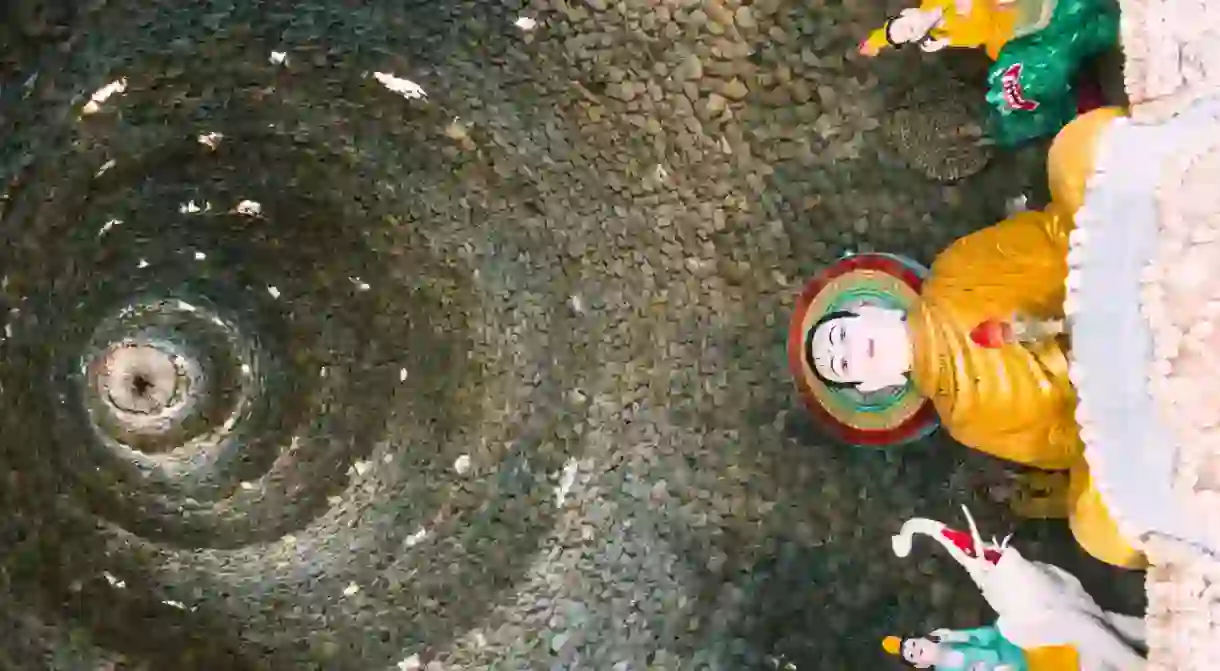Vietnam's 'Snail' Pagoda is Made of Millions of Corals and Shells

Just over 60 kilometers from the southern coastal city of Nha Trang lies a true treasure for the adventurous traveler. Tư Vấn pagoda is a fascinating sight to behold with a unique design that will delight anyone with an affinity for shell collections. The pagoda is famed for its Bảo Tích tower, a 39-meter-high structure built entirely of dead coral and sea shells.

A brief history of an ornate pagoda
The Tư Vấn pagoda was constructed in 1965 in the small coastal city of Cam Ranh by Buddhist monks. Upon entering the temple grounds, visitors will first notice the Thuyền Bát Nhã, a large boat used by Mitreya Buddha to carry righteous souls across the ocean of misery of after death. The sails feature excerpts from the Buddhist Book of Prayers to relax visitors so they may enter the grounds with a peaceful soul.


It wasn’t until 1995 that monks began constructing the famous Bảo Tích tower out of dead coral and sea shells abundant along Cam Ranh’s shores. From afar, the three-storey tall tower appears to be built with regular stones. It isn’t until closer inspection that travelers realize it is comprised of various corals. The incredible interior of the tower is shaped like a spiral and visitors may feel as though they’ve stepped inside a gigantic seashell!



There are hundreds of statues of Buddha and other deities placed on the Bảo Tích tower while the inside features the Goddess of Mercy, a deity with 1,000 eyes and arms. The tower was completed over the course of four years by the temple monks who worked tirelessly each day, laying the mortar and corals and decorating the interior of the temple with sensational mosaics of small seashells.



Symbols of Buddhist doctrine
The temple features eight doors that represent the Noble Eightfold Path, a path of Buddhist practices that leads to liberation from the insufferable cycle of rebirth called samsara. The practices focus on cultivating discipline, mindfulness, and personal restraint to attain nirvana. To remind pilgrims to follow the noble path, the temple monks built a 500-meter-long ‘road to hell’ that displays brutal eternal punishments for a number of sins.


The 18 layers of hell takes approximately 40 minutes to one hour to meander through. The tunnel is dark and narrow, so it may be best that claustrophobic travelers sit this one out. The tunnel is also elaborately decorated with rock, coral and shells between the stark displays of hellish torture. Local guides are normally on hand to offer a candled tour of the pathway but make sure to leave a small tip at the end.


Getting to Tư Vấn pagoda
Travelers wishing to take in this unusual temple can purchase a cheap ticket and hop on a bus in Nha Trang headed to Cam Ranh. Alternatively, visitors can download a map, rent a scooter and make the scenic drive down the coast to Tư Vấn pagoda. Expect to pay a small donation in lieu of an entrance fee and experience one of the most unique temples Vietnam has to offer.














